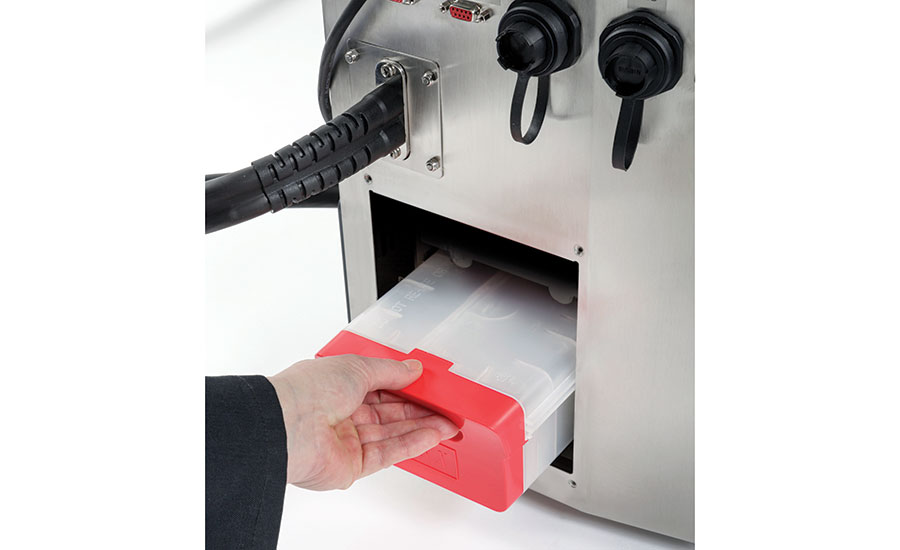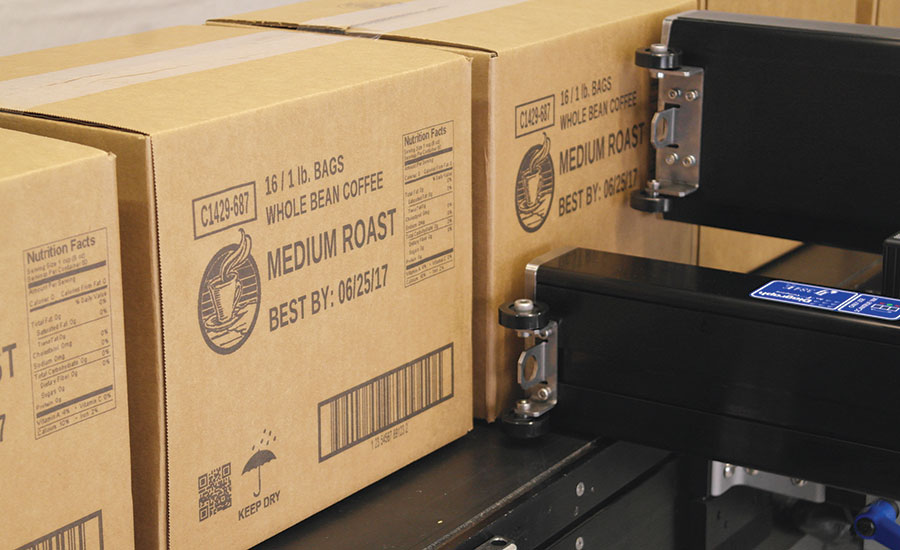Though marking, coding and labeling applications vary significantly from customer to customer and package to package, the main pain points are often shared. Fortunately, emerging technology and next-generation service support have made it possible to sidestep these issues, allowing brand owners to keep their focus on the products they are passionate about.
Pain Point #1: Skilled Labor
Impact: primary and secondary packaging, pallet labeling
Challenge: Complex coding and labeling equipment can be taxing from a time and resource perspective. Manufacturers’ highly skilled employees should be focused on their major equipment and processes, and not on the maintenance of supporting systems. This means that coding, marking and labeling equipment should be simple enough for the line operators to maintain.
Solution: To ensure your supplier can deliver on a promise to truly make coding, marking and labeling as easy as possible, look for the following elements:
- Predictive Analytics. Emerging coding, marking and labeling systems are smarter than ever. They have built-in intelligence and sensors that allow them to analyze your average run speeds, environmental challenges, consumable usage and more, in order to alert line operators to a possible technical issue before it becomes a problem.
- Onboard Diagnostics. If a technical glitch has occurred, newer systems with onboard diagnostics are able to quickly identify the problem and provide simple instructions on how the issue can be quickly resolved.
- Modular Design with Hot Swap Capabilities. Systems that feature a modular design and hot swap capabilities make it possible for line operators to swap out quickly any system element that needs updating with an on-the-shelf spare. This means there is no need to stop production on the line for extended periods of time. Look for systems with quick disconnects for both the ink and cables (data power). A vast majority of technical issues occur in these two areas. Quick disconnects allow line operators to conduct simple maintenance with minimal downtime. This is a significant improvement compared to older technologies where such repairs could take hours or even days.
- Printhead Exchange Programs. The print engine is the element of product coding systems that suffers the greatest wear and tear. To minimize the risk of downtime, some manufacturing lines use print engines that feature disposable printheads. An equally convenient but more affordable option is to find a supplier who offers a printhead exchange program. Manufacturers in such a program have one or more spares to ensure they are never left without a working printhead. As soon as a spare printhead is used, the manufacturer is sent a new spare printhead to have on reserve. Typically, such programs are as much as 75 percent less expensive than using disposable printheads and avoid unexpected downtime.
- Minimal Consumable Touch Points. The most frequent type of line operator intervention on a marking, coding or labeling system will involve consumable replacement. Look for systems with intelligent designs featuring minimal steps and hassle for consumable replacement. This means error-proof, RFID-enabled cartridges for continuous inkjet systems, centralized ink delivery systems for large-character inkjet systems and simple ribbon webbing paths for label applicator systems.

Pain Point #2: Misidentified Products
Impact: primary and secondary packaging, pallet labeling
Challenge: Dealing with misidentified products is the most common and costly pain point for manufacturers. Products are misidentified when there is no information printed, when incorrect information is printed or when illegible information is printed on a package. To avoid costly recalls or retailer fines, many manufacturers won´t ship misidentified products. This means product either needs to be thrown away or rework has to be done — both very expensive in cost and time.
Solution:
- Truly Simple User Interface. Customizable user interfaces give manufacturers the ability to select what system features are most important and relevant for their operation. Icon-driven systems allow line operators to quickly and accurately edit designated message fields with a minimal number of touches, often using preprogrammed auto-codes. Additionally, user-level specific password protection ensures that system capabilities, like message editing and maintenance actions, are limited to the appropriate scope for each system user.
- Prompted or Automated Message Creation. Prompted message creation reduces user error by limiting editable print fields and walking users step by step through inputting required information. Human error can be virtually eliminated by going one step further to automated message selection (also known as “shoot and scan”). This process utilizes scannable information on a package that automatically triggers the corresponding message selection.
- Turnkey Code Validation. Working with a partner that can provide integrated turnkey code validation technology onto your manufacturing line can ensure any printing errors are quickly identified and corrected. This is particularly impactful when partnered with smart printing systems that shut down the production line or reject products when appropriate print messages or labels are not applied.

Pain Point #3: Barcode Quality
Impact: secondary packaging
Challenge: Readable barcodes are essential for regulatory compliance as well as efficient supply chain management. Many factors — like clogged printheads due to corrugate dust and poor print quality, or label application caused by impacts from poor material handling — make it vital to identify quality coding and labeling systems capable of providing consistently readable barcodes. Failure to do so often results in costly rework and puts companies at risk in the event of recalls. Major retailers have been increasingly imposing steep fines on manufacturers who ship goods without perfectly readable barcodes, putting the manufacturer’s relationship at risk and directly impacting their bottom line.
Solution: Today the production of reliably readable barcodes can be virtually guaranteed. Be sure to identify a high-resolution, large-character inkjet system with stainless steel industrial construction, advanced shock resistance and auto-clean capabilities. This ensures reliable, quality print performance over longer periods of time. If guaranteed barcode quality is a retailer requirement, make sure that your coding and labeling solution provider can pair the inkjet system with auto-scanning and reject equipment that can be integrated into a closed-loop solution for guaranteed scannable, readable barcodes.
Celebrating its 125th anniversary this year, Diagraph Marking & Coding is the world´s oldest product identification company. The company is committed to making it easy for manufacturers to make the perfect mark on their products. Headquartered in Saint Charles, Mo., Diagraph serves customers in North and South America, Europe and Asia.


